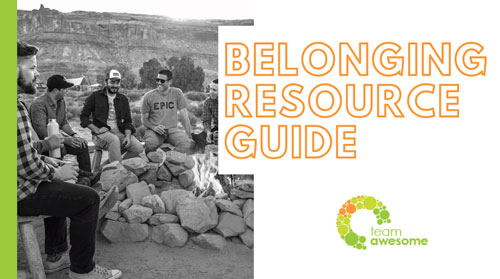If you have been listening to the Life and Leadership Podcast, you may know that Tegan (my co-host) and I are in the middle of our own 90-day commitments where we are trying to commit to a practice for 90 days and build some positive new habits in our lives that will help us feel the way we want to feel. That is an important part: the core desired feeling.
Many of our friends and family (maybe you too!) are joining us with their own 90-day commitments in a Facebook group we are hosting, and I posed a question to the group now that we are a few weeks in to our 90-day period. The question that I asked was: Are your goals working in tandem, against each other or are they totally separate?
Are your goals working in tandem, against each other or are they totally separate?
Goals in tandem
When goals work in tandem together, you begin to realize that you tend to be either on or off the wagon entirely. For example, when I am exercising regularly, I tend to eat better because I don’t want to blow all of my hard work on empty calories. When I stop exercising, my diet tends to be less intentional as well. When I am at peak fitness, I realize that it is hard to feel good running if I have had a lot of wine the night before, or if I didn’t drink enough water. If I can keep momentum going, chances are I am going to perform well in all of these areas that are working together.
One way to see a common thread in your goals is to identify that all of your goals can feed a common core desired feeling. If you have goals to read, reduce screen time, and leave work by 5:00 p.m., those might all be goals that support your core desired feeling of being present in your home life. Making this connection in your mind helps strengthen the bonds these more tactical goals have and you can see how they work together to give you the life you want.
Working against each other
Sometimes it may feel as if our goals are working against each other. This might actually be true. If you have goals that require three hours of your time a day but you truly only have one hour to put towards it, it will feel as if you can never “fit it all in.” The stress of that conflict will never feel good. Being very planful and strategic up front when you decide how you will fit a new habit into your life is important to setting routines in a way that don’t feel as if they are tugging against each other.
In some cases, perhaps the conflict we are feeling is of our own creation and can be eliminated by an adjustment in mindset. For example, it is possible that your goal to learn photography causes you to feel like “practice time” snapping pictures takes away from time spent with your kids. Instead of worrying about snapping the perfect still life flower photo, change your mindset and practice taking pictures of the times you are spending with your kids! All of a sudden, your goals no longer feel in conflict and you will have some amazing photos of your life as a bonus.
Separate
Perhaps you don’t see any connection or conflict between your goals, and you are able to work on more than one simultaneously. I would challenge you to dig deeper and see if there are in fact some core desired feelings connecting those goals together. If you are able to find that common thread, the understanding that these goals all represent something larger than themselves often helps us stay on track for those core feelings we are seeking. If you look deep, you can see that one person’s goals of networking and spending time with family are all related to their deep-rooted need to connect with the humans around them.
If you find no connections, be strategic about how many individual goals you take on at any one time so that you are able to create habits for each of them with a quality foundation over quantity. For some people one goal is all they can handle with quality, and for others maybe three is an appropriate maximum. You choose what is right for you.
However your goals are working for you, taking a little time to reflect and gain awareness for the connectivity of your goals and core desired feelings can be a game changer and help solidify positive new habits in your life.
About the author:
Katie Rasoul is the Chief Awesome Officer for Team Awesome, a leadership coaching and culture consulting firm. She is a TEDx speaker alumna, author of the best-selling book, Hidden Brilliance: A High-Achieving Introvert’s Guide to Self-Discovery, Leadership and Playing Big, and co-host of The Life and Leadership Podcast.
Find out more by visiting www.teamawesomecoaching.com or join the Team Awesome Community for awesomeness coming straight to your inbox. Follow Team Awesome on Instagram, Facebook and Twitter.
See more about Katie’s keynote presentation on this topic, “Defining and Achieving Your Goals” here.



Recent Comments